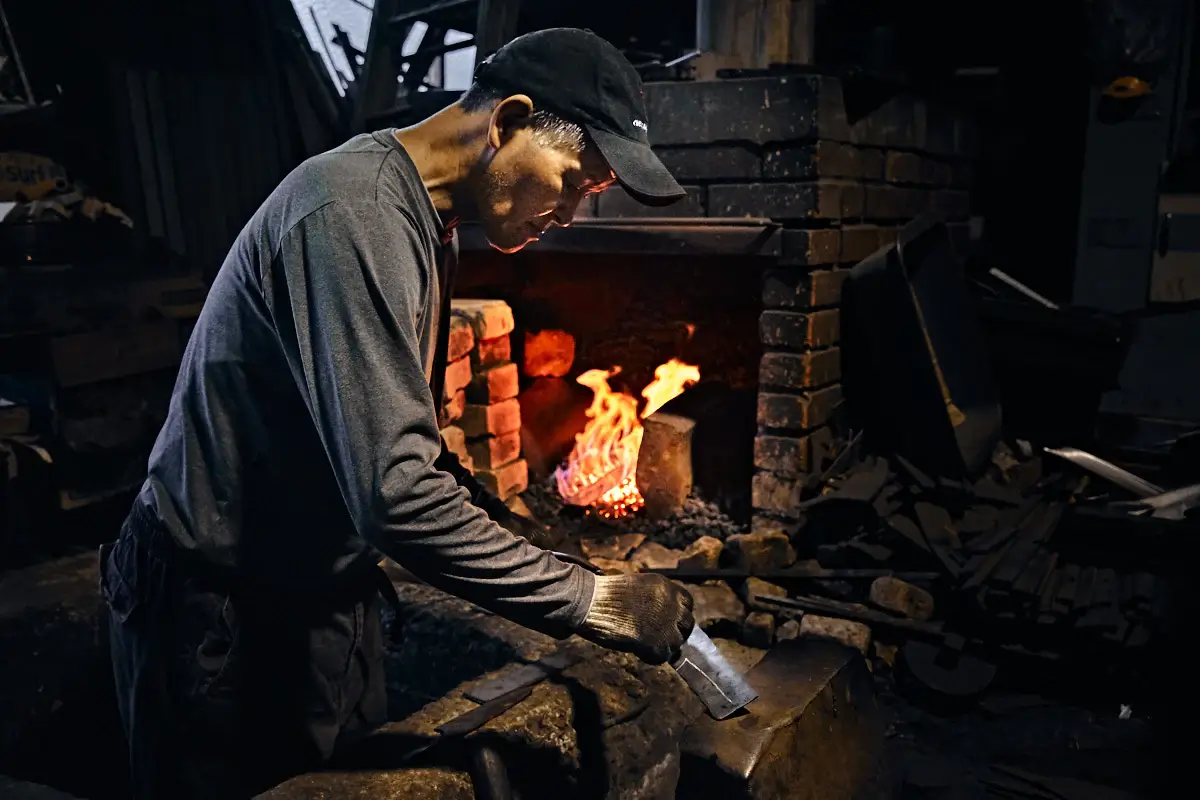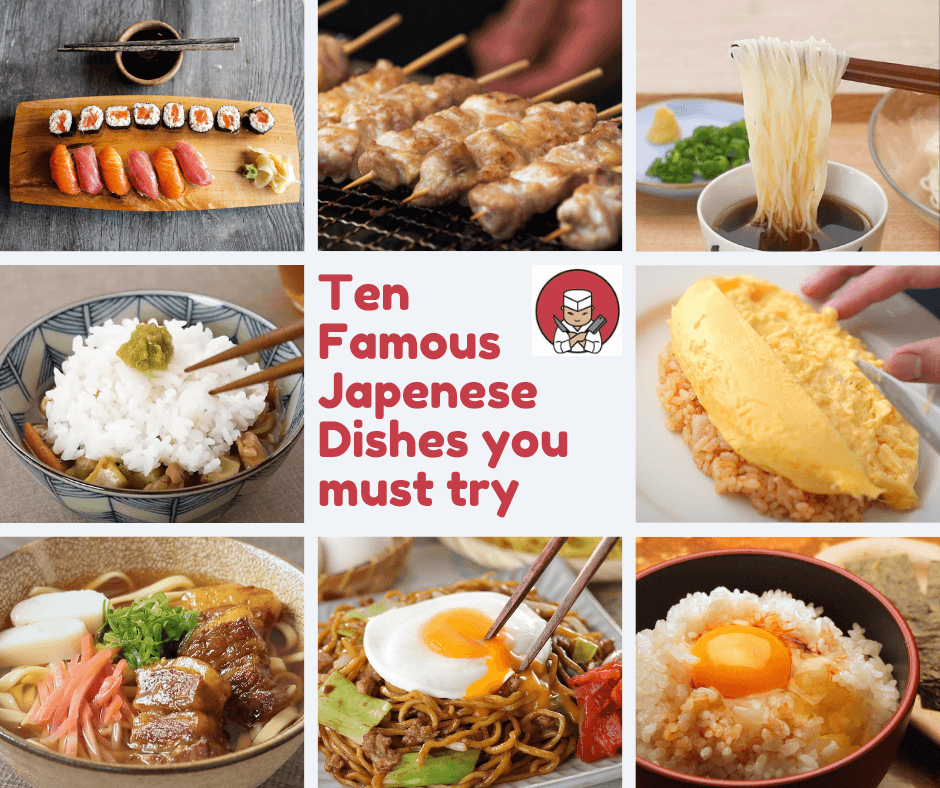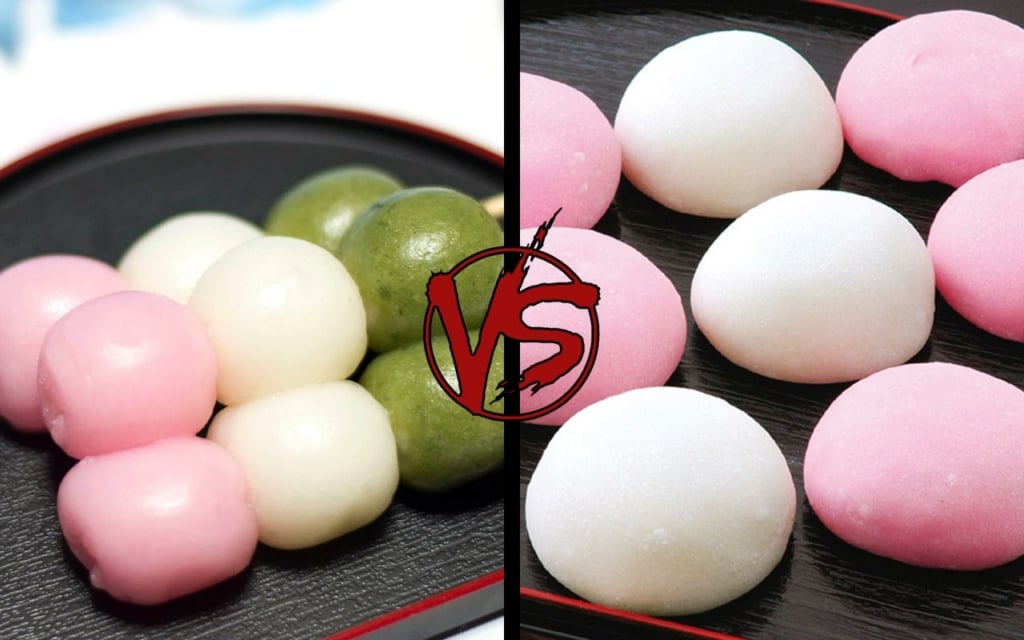
In this week’s random Japanese food article, I take a look at dango vs mochi.
Last week, while researching Nagano’s famous foods, I came across a unique food called gohei mochi (五平餅). It kind of looks like a big, flattened dango, but it’s called mochi. So, I started thinking …
“Is dango considered mochi?”
“What’s the difference?”
Read on for a detailed comparison between these two popular rice-based Japanese snacks:
- Brief overview of each
- Ingredients
- How they’re made
- Types of dango and mochi
- and more…
Let’s get started:
What is mochi? (もち・ 餅)
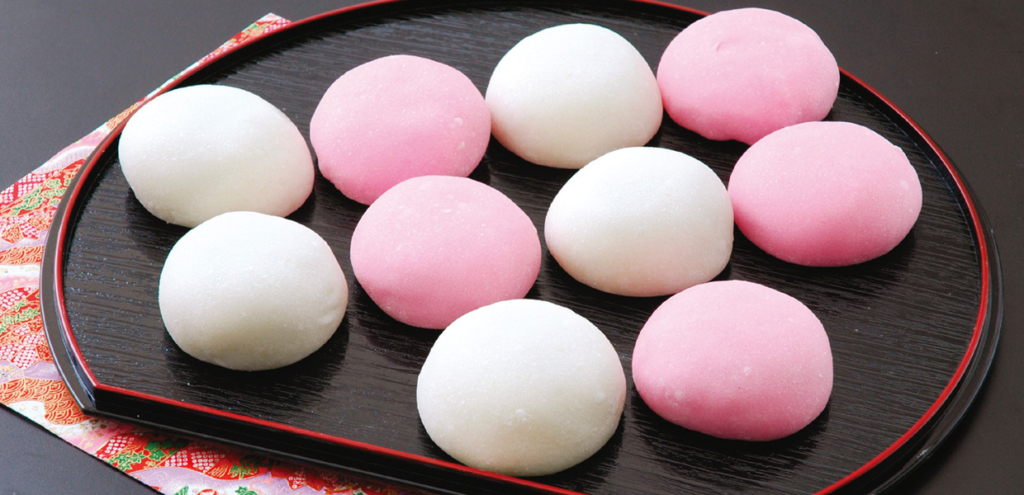
Traditional Japanese mochi is a rice cake made of mochigome (もち米), a type of short-grained glutinous rice. Sometimes, various other ingredients are added as well. The rice is steamed, pounded and molded into the desired shape.
What is dango? (団子)
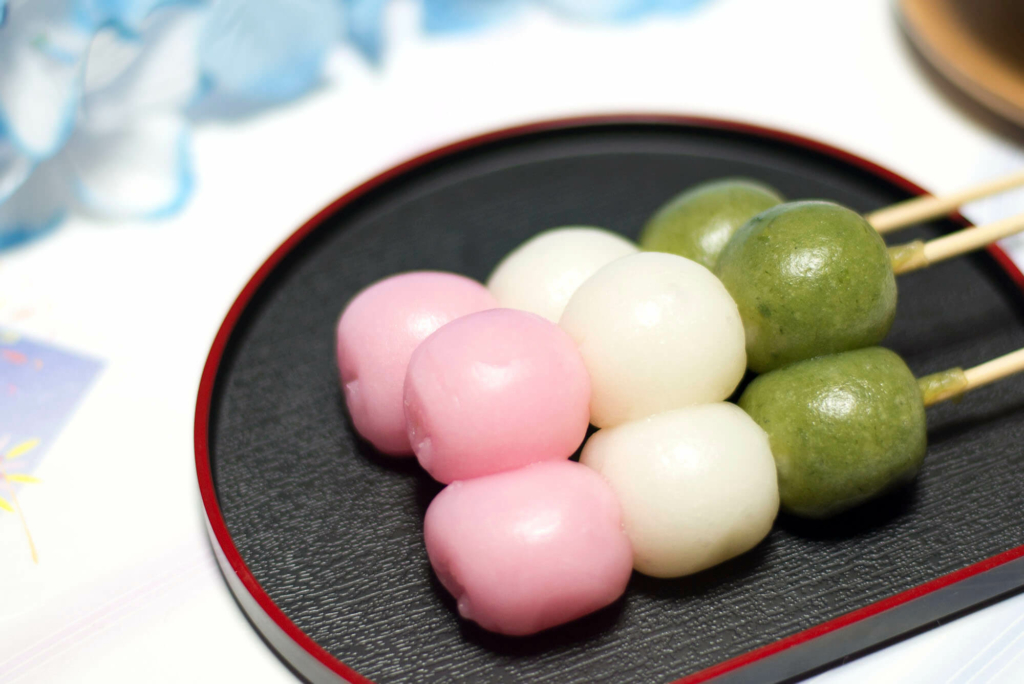
Dango is a traditional Japanese sweet made with rice flour, and usually formed into a bite-sized ball. Dango is often served on a skewer of three to five pieces (i.e. kushi-dango 串団子)
The term “dango” is also a general way to refer to any ball-shaped food. For example, meatball is called “niku-dango” (肉団子). For this article, we are just focusing on the traditional rice-based version of dango.
Check out this list of 22 different types of dango!
Ingredients + Process
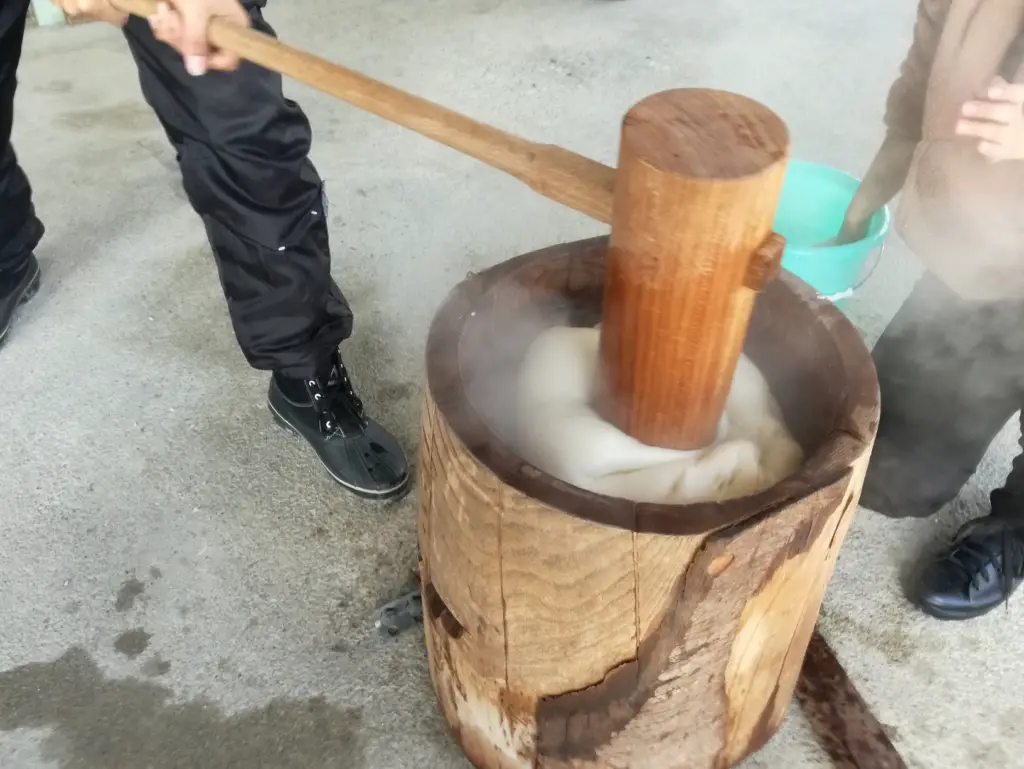
The main differences between the two is raw ingredients, and how it’s made:
Mochi was originally made of steamed glutinous rice which was then pounded with a pestle and formed into various shapes. The process is called “mochi-tsuki” (餅つき).
Dango was originally made with non-glutinous rice flour, which was then mixed with water and kneaded into a dough. The dough is then cut, formed into balls, and steamed or boiled.
These days though, some mochi is actually made with non-glutinous rice, and some dango is made with glutinous rice flour. Sometimes a mix of both non-glutinous and glutinous rice products are used.
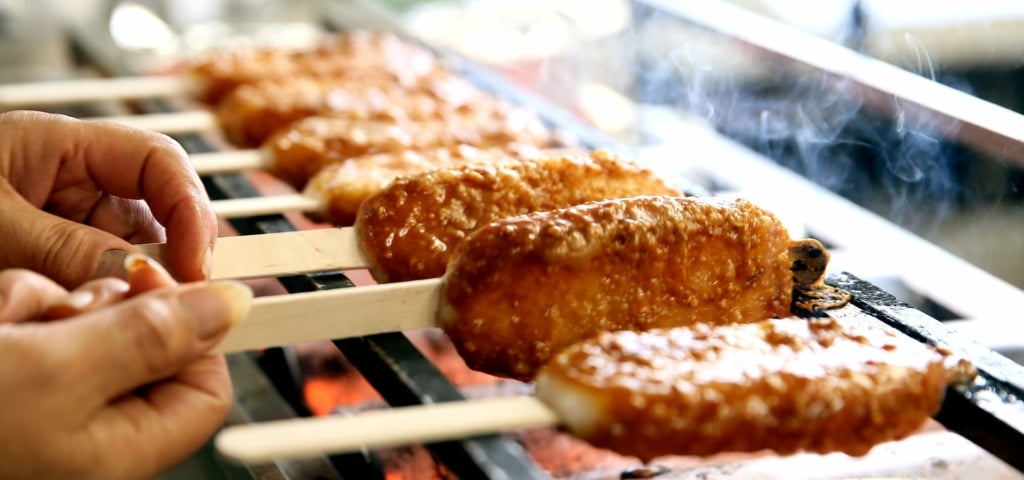
For example, the aformentioned “gohei mochi” from Nagano uses non-glutinous rice grains, but is still called “mochi”. Kawamochi(こわもち) is mochi that is made with a mix of both non-glutinous and glutinous rice.
So, the real main difference in raw ingredients is that dango uses rice FLOUR, while traditional mochi typically uses whole rice GRAINS.
This is still not always true, as there are some “mochi” products will also use rice flour (e.g. kashiwamochi and sakuramochi). The lines are really blurred!
Types / How its eaten
Mochi Types
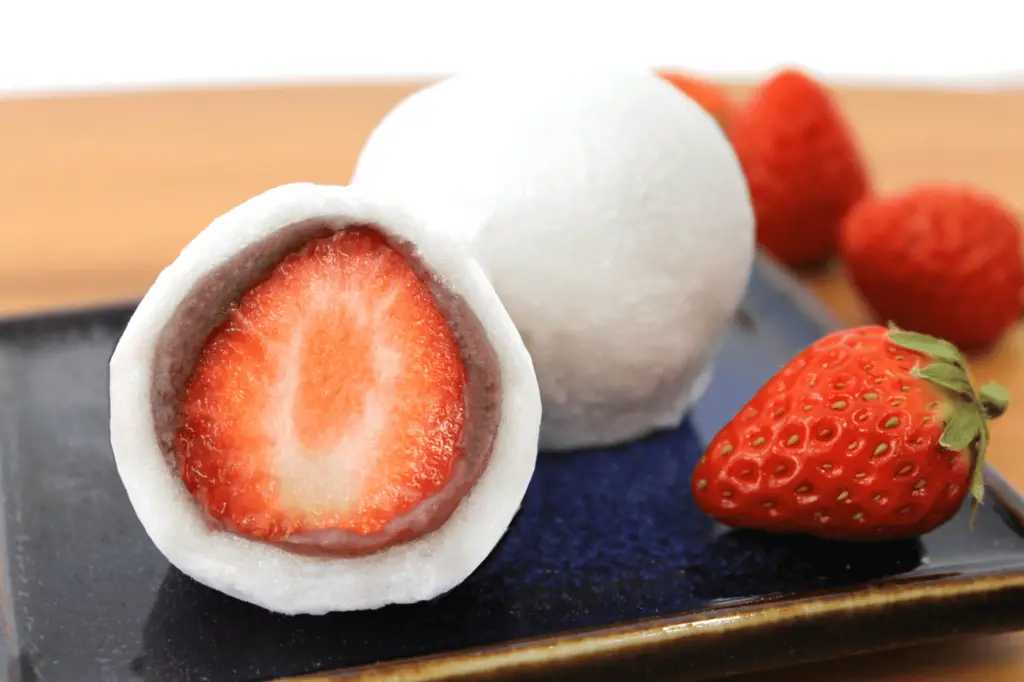
Mochi is eaten and cooked in a huge variety of ways, both sweet and savoury.
It is probably best known in Western countries as a sweet snack. For example, the popular treat “daifuku-mochi” (大福餅) is mochi stuffed with various sweet fillings (red bean paste, strawberries, etc.).
You may also be familiar with popular mochi ice cream treats, which are basically mochi stuffed with various flavors of ice creams. Really delicious!
Mochi is also often used in savoury dishes like okonimiyaki and shabu-shabu. There is also deep-fried mochi (揚げ餅).
Dango Types
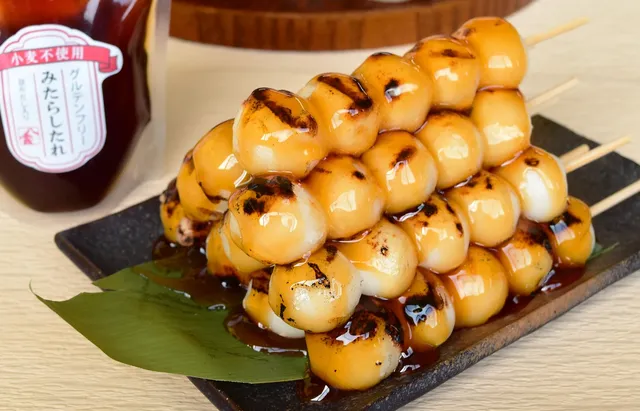
Dango is best known as a ball-shaped, traditional Japanese sweet (i.e. wagashi 和菓子) served on a skewer of three to five pieces (i.e. kushi-dango).
The dango can be grilled or steamed, and are often coated with various sweet or savoury toppings. Some typical sweet toppings include red bean paste, sesame, soybean flour and sugar. Three-color dango is a popular version usually eaten during cherry-blossom festival. It is a skewer of a pink, green, and white dango.
The most common savory topping is soy sauce (i.e. shoyu-dango 醤油団子). The dango is usually grilled, then dipped or coated in a soy sauce.
Other Dango vs Mochi FAQ
What’s the difference between mochi and daifuku?
Daifuku is a type of mochi. It is mochi that is stuffed with a filling like red bean paste (i.e. anko), or strawberry.
Are mochi or dangos healthy?
Not really, both typically contain a lot of sugar. They are typically eaten as desserts or treats.
How many types of dango and mochi are there?
There are a ridiculous number of variations of both dango and mochi.
Check out this list of 22 types of dango. There is also well over 20 types of mochi. Check out this list from Japan Wikipedia.
Summary
Traditionally, mochi and dango differed by both the ingredients used and the process used to make them.
Mochi was made with whole glutinous rice grains, while dango used non-glutinous rice flour.
These days, the lines are quite blurred. This is especially true for “mochi”, which has slowly become a more general term for any similar chewy rice-based snack. Sometimes non-glutinous rice is used, and sometimes even rice flour is used.
Mochi also has a much wider range of potential food types (both sweet and savoury), while dango typically refers to the traditional Japanese sweet.
Let me know in the comments:
Have you ever tried mochi? or dango?
What did you think?
Sources:
- https://topics.tbs.co.jp/article/detail/?id=4251
- https://ja.wikipedia.org/wiki/%E9%A4%85
- https://foodjapan.info/5926.html
- https://チコちゃんに叱られる.com/3669.html#i-5
Subscribe for free today! Receive cool recipes, my latest Japanese knife picks and learn about Japanese culture. Delivered every other week to your inbox.
